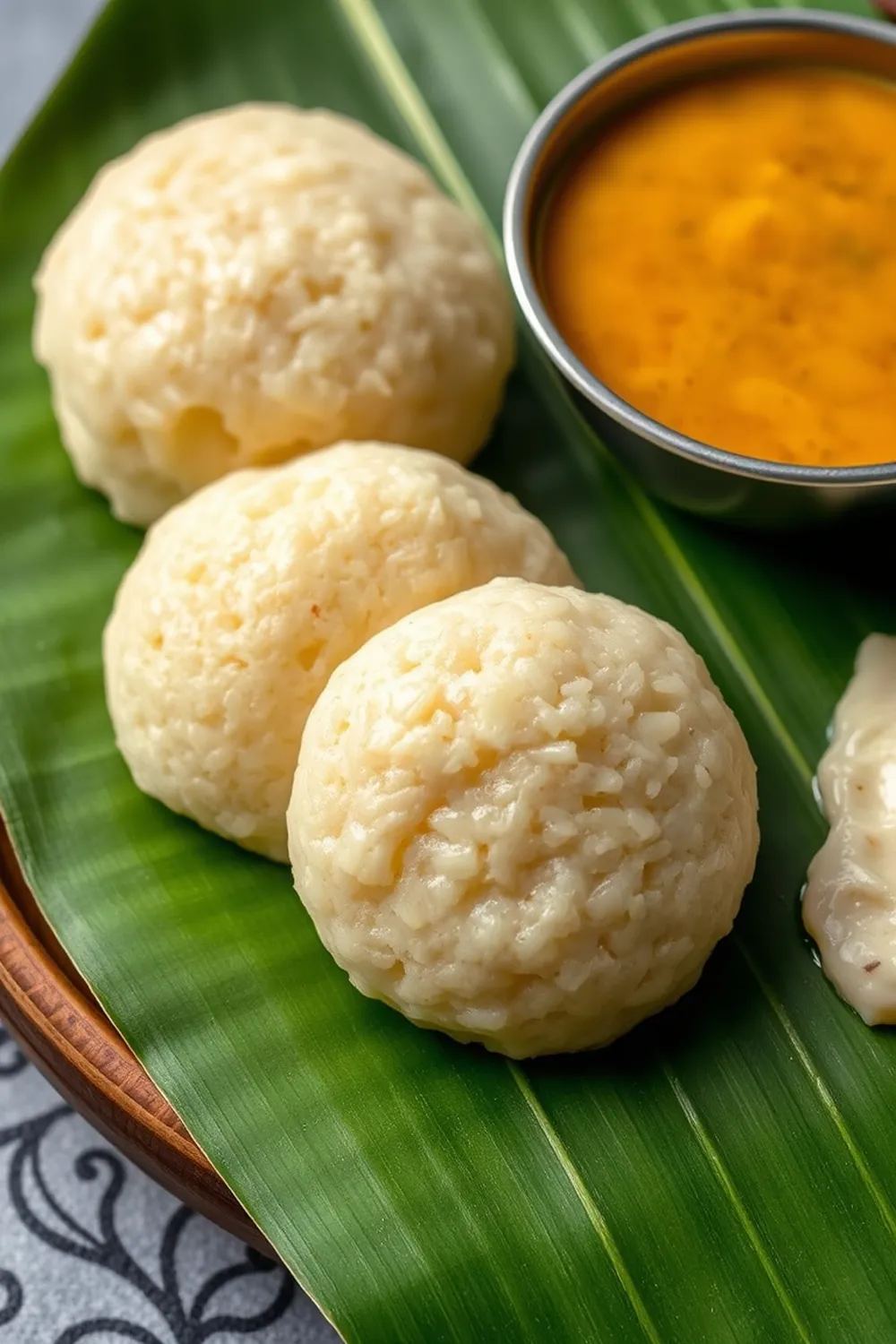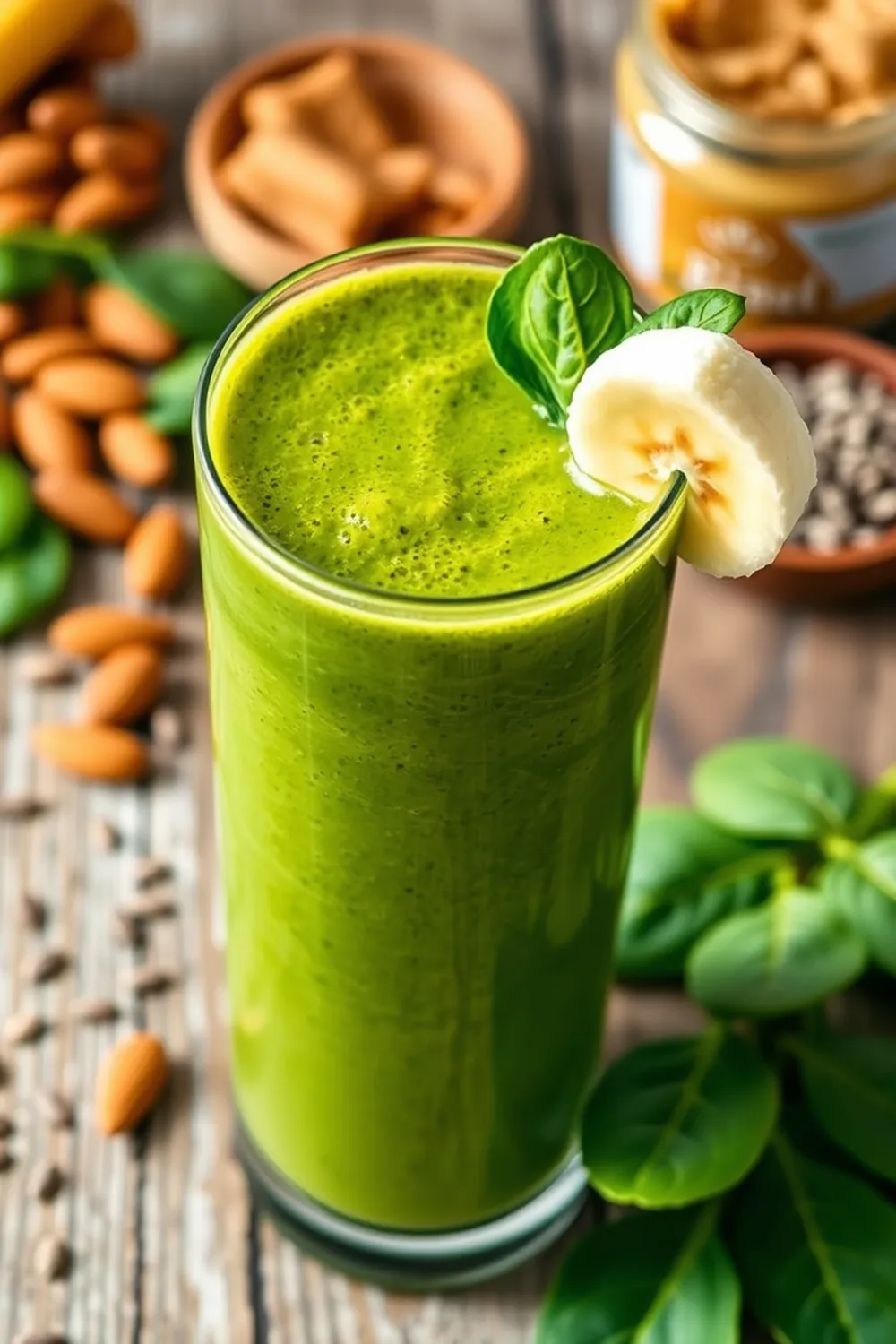- Wash foxtail millet and rice, then soak in water for 4-5 hours.
- Rinse urad dal and fenugreek seeds, and soak separately for 4-5 hours.
- Drain the millet-rice mixture and grind into a slightly grainy batter using minimal water.
- Drain the urad dal-fenugreek mixture, grind into a smooth batter, and use the reserved soaking water if needed.
- Combine both batters, add salt, mix well, and ferment overnight (8-12 hours) in a warm place.
- Grease idli molds, pour batter into each cavity, and steam for 10-12 minutes.
- Remove idlis using a damp spoon and serve hot with sambar and coconut chutney.
- Calories:45 kcal25%
- Energy:188 kJ22%
- Protein:2 g28%
- Carbohydrates:9 mg40%
- Sugar:mg8%
- Salt:50 g25%
- Fat:0.5 g20%
Last Updated on 4 months by Neha Deshmukh
Foxtail Millet Idli Recipe – Authentic South Indian Breakfast
Introduction
Okay, let’s be real – is there anything better than a fluffy, warm idli for breakfast? It’s just…comfort food perfection! I remember my grandmother making these every Sunday, and the whole house would smell incredible. Today, I’m sharing my take on this classic, but with a healthy twist – we’re using foxtail millet! It adds a lovely nutty flavour and a boost of nutrition. Trust me, you won’t miss the rice. This recipe takes a little time, mostly for soaking and fermenting, but the results are so worth it.
Why You’ll Love This Recipe
This foxtail millet idli recipe isn’t just delicious; it’s good for you too! It’s a fantastic way to incorporate a nutritious grain into your diet. Plus, it’s naturally gluten-free, making it a great option for those with dietary restrictions. And honestly, the slightly different texture from the millet is really interesting – it’s a subtle change that elevates the whole experience.
Ingredients
Here’s what you’ll need to make these delightful idlis:
- 200 grams foxtail millet (Moraiyo/Kangni)
- 80 grams idli rice
- 80 grams urad dal (split black lentils)
- 1.5 teaspoons fenugreek seeds (methi)
- Salt to taste
- Water as needed
Ingredient Notes
Let’s talk ingredients! Getting these right makes all the difference.
Foxtail Millet (Moraiyo/Kangni) – Health Benefits & Selection
Foxtail millet, known as moraiyo in Hindi and kangni in some other Indian languages, is a powerhouse of nutrients. It’s rich in protein, fibre, and minerals. When buying, look for grains that are clean and free from any debris.
Idli Rice – Choosing the Right Grain
Idli rice is a short-grain rice specifically used for making idlis and dosas. It has a higher starch content, which gives the idlis their soft texture. You can usually find it at Indian grocery stores. If you can’t find it, parboiled rice is a decent substitute, but the texture might be slightly different.
Urad Dal – Quality and Soaking Tips
Urad dal is the key to that light and fluffy texture. Make sure you use good quality dal – it should be plump and evenly coloured. Soaking is crucial for softening the dal and making it easier to grind.
Fenugreek Seeds – The Role of Methi
Don’t skip the fenugreek seeds! They help with fermentation and add a subtle flavour. A little goes a long way, so stick to the 1.5 teaspoon measurement.
Regional Variations in Idli Making
Idli making varies across South India! Some regions prefer a higher ratio of urad dal to rice, resulting in a softer idli. Others add a handful of poha (flattened rice) to the batter for extra fluffiness. Feel free to experiment and find what you like best!
Step-By-Step Instructions
Alright, let’s get cooking!
- First, wash the foxtail millet and idli rice together a couple of times until the water runs clear. Then, soak them in plenty of water for 4-5 hours.
- In a separate bowl, rinse the urad dal and fenugreek seeds. Soak these together in water for 4-5 hours as well.
- Once soaked, drain the millet-rice mixture and grind it into a slightly grainy batter. Use as little water as possible – we want a thick consistency.
- Now, drain the urad dal-fenugreek mixture and grind it into a smooth batter. Reserve the soaking water – you might need it to adjust the consistency.
- Combine both batters in a large bowl. Add salt to taste and mix everything really well.
- Cover the bowl and let it ferment overnight (8-10 hours) in a warm place. This is where the magic happens!
- Once fermented, grease your idli molds with a little oil. Pour the batter into each cavity, filling them about ¾ full.
- Steam the idlis for 12-14 minutes. A good sign is when a toothpick inserted into an idli comes out clean.
- Remove the idlis using a damp spoon and serve them hot with sambar and coconut chutney.
Expert Tips
Here are a few things I’ve learned over the years to make perfect idlis:
Achieving the Perfect Idli Texture
The key is the batter consistency. It shouldn’t be too runny or too thick. It should be pourable but still hold its shape slightly.
Fermentation – Troubleshooting & Ideal Conditions
Fermentation is temperature-dependent. In colder weather, it might take longer. You can place the batter near a warm oven or in a preheated (then turned off!) oven to help it along. If it doesn’t ferment, it might be the quality of the urad dal or the water.
Grinding the Batter – Consistency is Key
A good grinder is your friend here! If you don’t have a powerful grinder, you might need to grind the dal in batches.
Steaming Techniques for Soft Idlis
Make sure there’s enough water in your steamer and that the water is boiling before you put the idli molds in. Don’t open the steamer lid during the first 10 minutes, or the idlis might become dense.
Variations
Let’s get creative!
Vegan Foxtail Millet Idli
This recipe is already naturally vegan! Just ensure your sambar and chutney are also vegan-friendly.
Gluten-Free Foxtail Millet Idli
Yep, this one’s already gluten-free too! Foxtail millet and idli rice are both naturally gluten-free grains.
Spice Level Adjustments (Adding Green Chilies)
If you like a little heat, add 1-2 finely chopped green chilies to the batter. My friend, Priya, always adds a pinch of asafoetida (hing) too – it adds a lovely savoury flavour.
Festival Adaptations (Pongal/Makar Sankranti)
During Pongal or Makar Sankranti, some families add a little bit of ghee to the batter for extra richness.
Serving Suggestions
Idlis are best served hot with sambar and coconut chutney. But don’t stop there! You can also try them with:
- Tomato chutney
- Mint-coriander chutney
- Podi (gunpowder)
Storage Instructions
Leftover idlis can be stored in the refrigerator for up to 3 days. Reheat them by steaming them for a few minutes. You can also store the fermented batter in the refrigerator for up to 2 days. It might need a little mixing before using.
FAQs
Let’s answer some common questions:
What is foxtail millet and is it a good substitute for rice in idlis?
Foxtail millet is a nutritious grain that’s a great substitute for rice in idlis. It adds a lovely nutty flavour and a boost of fibre and protein.
How do I know if the idli batter has fermented properly?
The batter will have increased in volume and will have a slightly sour smell. You’ll also see small bubbles on the surface.
Can I make idlis without a steamer?
Yes, you can! You can use a large pot with a tight-fitting lid and a trivet to keep the idli molds above the water.
What can I do if my idlis are too hard?
Your batter might be too thick, or you might have oversteamed them. Try adding a little water to the batter next time and reducing the steaming time.
How long can I store idli batter in the refrigerator?
You can store idli batter in the refrigerator for up to 2 days. It might need a little mixing before using.










